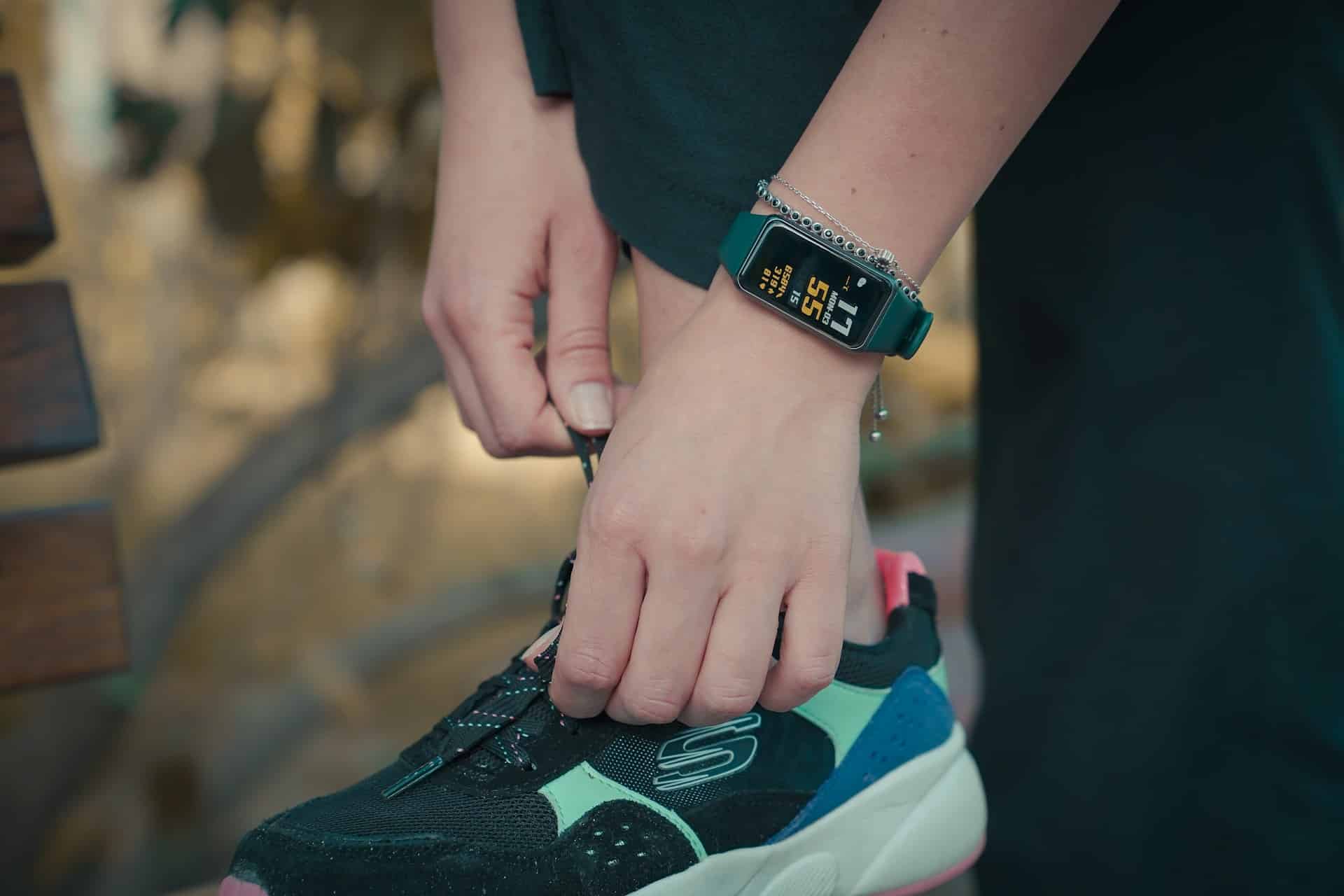In today’s fast-paced world, tracking your fitness and monitoring your health have become essential components of a healthy lifestyle. With the advent of mobile technology and fitness tracking apps, you no longer need to invest in expensive gadgets to keep an eye on your physical activity. Your smartphone can serve as a versatile and advanced fitness tracker. In this article, we will explore how you can transform your smartphone into a powerful tool for tracking your outdoor activities, ensuring that you remain in peak physical condition.
The Evolution of Fitness Tracking
Fitness tracking has come a long way from the days of simple pedometers. Nowadays, advanced fitness trackers and apps can monitor a wide array of metrics, from heart rate to sleep patterns and even stress levels. This transformation is largely due to the integration of sophisticated sensors and the internet of things (IoT) into mobile devices. Your smartphone, equipped with the right apps and accessories, can track your fitness with remarkable accuracy.
En parallèle : How to Configure Your Tablet for Optimal Use in Professional Presentations?
From Pedometers to Smartphones
Traditional pedometers were designed to count steps, but they offered little else in terms of data or insights. Modern fitness trackers have evolved to include GPS, heart rate monitors, and multiple sensors that provide a comprehensive overview of your physical activity. With the help of smartphone apps, you can now monitor everything from your daily step count to the quality of your sleep.
Leveraging Mobile Technology for Fitness
Your smartphone is a powerful device with an array of built-in sensors, including accelerometers, gyroscopes, and GPS. These sensors, combined with the computational power of modern smartphones, make it possible to track a variety of fitness metrics accurately. By leveraging mobile technology, you can obtain insights into your health that were previously only available through specialized equipment.
Sujet a lire : How to Use Your Smartphone to Create a Secure Mobile Payment System for Events?
Essential Features of Fitness Tracking Apps
When selecting a fitness tracking app, there are several key features that you should look for to ensure you get the most out of your fitness tracker. These features not only enhance the user experience but also provide valuable insights into your health and physical activity.
Comprehensive Data Collection
A good fitness tracking app should provide a wide range of data collection options. This includes tracking your steps, distance, calories burned, heart rate, and sleep patterns. Apps like Apple Watch and Google Fit offer comprehensive data collection, allowing you to monitor various aspects of your fitness journey. Additionally, apps that integrate with health databases like Google Scholar or PubMed Crossref can provide valuable insights into your health data.
Accurate Heart Rate Monitoring
Monitoring your heart rate is crucial for understanding your fitness level and overall health. Many fitness tracking apps now come with built-in heart rate monitors that use your phone’s camera or connect to external heart rate sensors. Accurate heart rate monitoring can help you optimize your workouts, ensuring that you stay within your target heart rate zone for maximum benefits.
Sleep Tracking Capabilities
Sleep tracking is another essential feature that can provide valuable insights into your overall health. Many fitness tracking apps offer sleep tracking capabilities, allowing you to monitor the quality and duration of your sleep. Poor sleep can impact your fitness and health, so having a comprehensive view of your sleep patterns can help you make necessary adjustments.
Integration with Other Devices and Apps
A good fitness tracking app should integrate seamlessly with other devices and apps. For example, the Apple Watch works well with the Health app, allowing you to sync your data across various devices. Similarly, apps that can connect with external sensors or other fitness trackers provide a more comprehensive view of your fitness data.
User-Friendly Interface
Finally, a user-friendly interface is crucial for ensuring that you can easily navigate the app and access your fitness data. The best fitness tracking apps offer intuitive interfaces that are easy to understand and use, making it simple to monitor your progress and set new fitness goals.
Maximizing the Potential of Your Smartphone
To maximize the potential of your smartphone as an advanced fitness tracker, it’s essential to understand how to use its features effectively. Here are some tips to help you get the most out of your mobile device for fitness tracking.
Utilizing Built-In Sensors
Your smartphone comes equipped with several built-in sensors that can be used for tracking your fitness. The accelerometer, gyroscope, and GPS are some of the key sensors that can monitor your physical activity. By utilizing these sensors, you can track your steps, distance, and even the elevation of your outdoor activities.
Selecting the Right Fitness Apps
Choosing the right fitness apps is crucial for ensuring that you get accurate and comprehensive fitness data. Apps like Strava, MyFitnessPal, and Runkeeper are popular choices that offer robust tracking features. These apps can track your workouts, monitor your progress, and provide insights into your fitness journey.
Integrating with Wearable Devices
While your smartphone can track a lot on its own, integrating it with wearable devices like the Apple Watch or other fitness trackers can enhance its capabilities. Wearable devices often come with additional sensors that provide more accurate heart rate monitoring and other metrics. By syncing your wearable device with your smartphone, you can get a more comprehensive view of your fitness data.
Monitoring Your Battery Life
One of the challenges of using your smartphone as a fitness tracker is battery life. Continuous use of GPS and other sensors can drain your battery quickly. To avoid this, make sure to monitor your battery life and use power-saving modes when necessary. Additionally, carrying a portable charger can ensure that your phone remains powered during long outdoor activities.
Setting Realistic Goals
Setting realistic fitness goals is essential for staying motivated and on track. Your fitness tracking app can help you set and monitor these goals, providing reminders and notifications to keep you on track. Whether you aim to walk a certain number of steps each day or achieve a specific heart rate zone during your workouts, setting and tracking your goals can help you stay focused and motivated.
The Role of Data in Fitness Tracking
Data plays a crucial role in fitness tracking. By collecting and analyzing data from your workouts, you can gain valuable insights into your health and fitness levels. Understanding how to interpret this data is essential for making informed decisions about your fitness journey.
Analyzing Your Workout Data
Most fitness tracking apps provide detailed reports on your workouts, including metrics like distance, calories burned, and heart rate. By analyzing this data, you can identify patterns and trends in your fitness routine. For example, you might notice that your heart rate is higher during certain types of workouts, indicating that you’re pushing yourself harder.
Understanding Your Heart Rate Zones
Your heart rate zones are a crucial metric for understanding the intensity of your workouts. Fitness tracking apps often provide guidance on your target heart rate zones, helping you optimize your workouts for maximum benefits. By staying within your target heart rate zone, you can ensure that you’re getting the most out of your exercise sessions.
Monitoring Your Sleep Patterns
As mentioned earlier, sleep tracking is an essential feature of fitness tracking apps. By monitoring your sleep patterns, you can gain insights into the quality and duration of your sleep. Poor sleep can impact your fitness and overall health, so understanding your sleep patterns can help you make necessary adjustments for better sleep quality.
Using Data for Goal Setting
Data from your fitness tracking app can also be used for goal setting. By understanding your current fitness levels, you can set realistic and achievable goals. Whether you aim to run a certain distance or achieve a specific heart rate during your workouts, data can help you track your progress and stay motivated.
In conclusion, your smartphone is a powerful tool that can be transformed into an advanced fitness tracker for outdoor activities. By utilizing built-in sensors, selecting the right fitness apps, and integrating with wearable devices, you can track your fitness with remarkable accuracy. Additionally, understanding and analyzing your fitness data can help you make informed decisions about your health and fitness journey.
Whether you’re a seasoned athlete or just starting your fitness journey, using your smartphone as a fitness tracker can provide valuable insights into your health and help you achieve your fitness goals. So, the next time you head out for an outdoor activity, remember to take advantage of the powerful fitness tracking capabilities of your smartphone.
By leveraging the technology at your fingertips, you can stay on top of your fitness and health, ensuring that you live a healthier and more active lifestyle.









